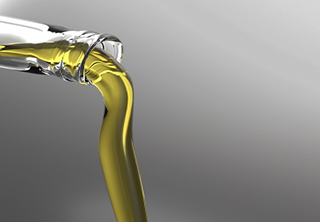 LA-rich vegetable oils
|
 AA-rich meat and eggs
|
The three major omega-6 fatty acids are Linoleic acid (LA), Arachidonic acid (AA) and Gamma-linolenic acid (GLA).
LA is the parent in the omega-6 family. Like ALA, it’s also considered an essential fatty acid for the body which must be obtained through one’s diet. However, it’s more likely that you have an oversupply rather than a lack of LA due to the high levels of this fatty acid in vegetable oils.
AA and GLA are manufactured using LA as the raw material (see "Metabolic Pathway of Essential fatty acids"), which will give rise to different types of eicosanoids.
Linoleic acid (LA) and Arachidonic acid (AA) - The "bad" Omega 6
The most commonly consumed omega-6 fatty acids is Linoleic acid (LA), which is rich in vegetable oils. Arachidonic acid (AA) comes mainly from animal sources such as meat, egg and dairy products.
Although LA and AA are essential to human health, most people take in more than necessary and it may be potentially harmful to our health.
Taking excessive amount of LA and AA has been associated with reduced anti-inflammatory effects of omega-3 fatty acids and increased inflammation by converting to inflammatory eicosanoids like PGE3 (see "Metabolic Pathway of Essential fatty acids").
Gamma-linolenic acid (GLA) - The "good" Omega 6
Gamma-linolenic acid (GLA) is converted to dihomo-gamma-linolenic acid (DGLA) in our body. DGLA is further converted to anti-inflammatory eicosanoids like PGE1.
Click here to learn more about GLA.

